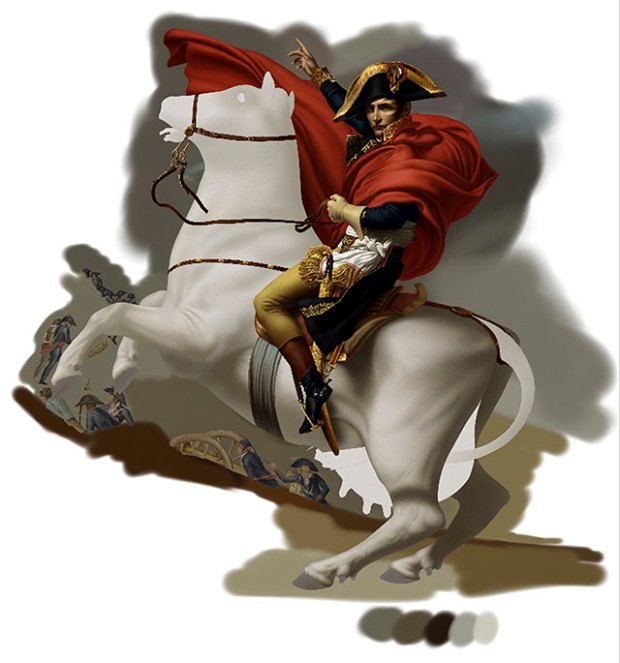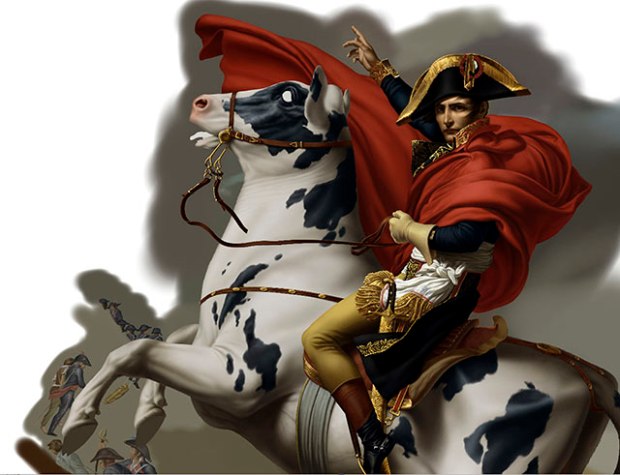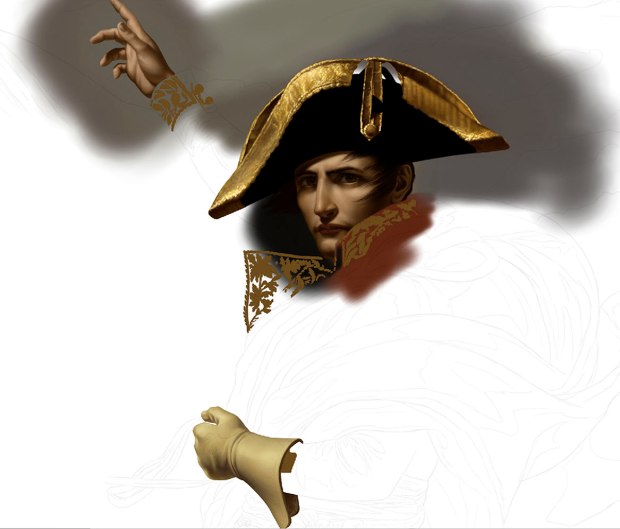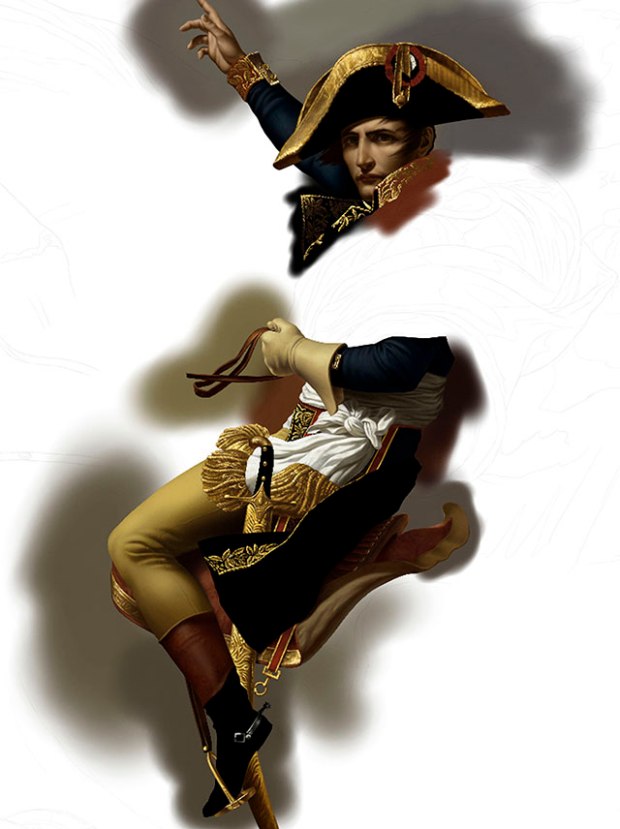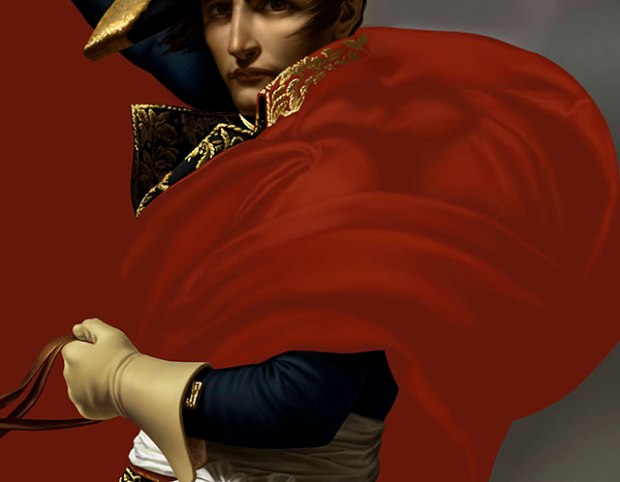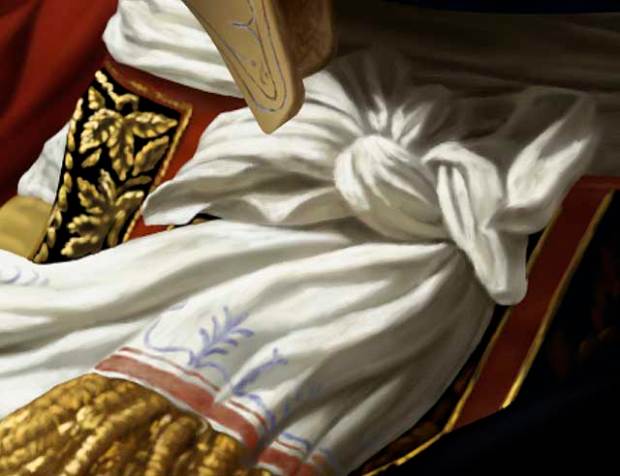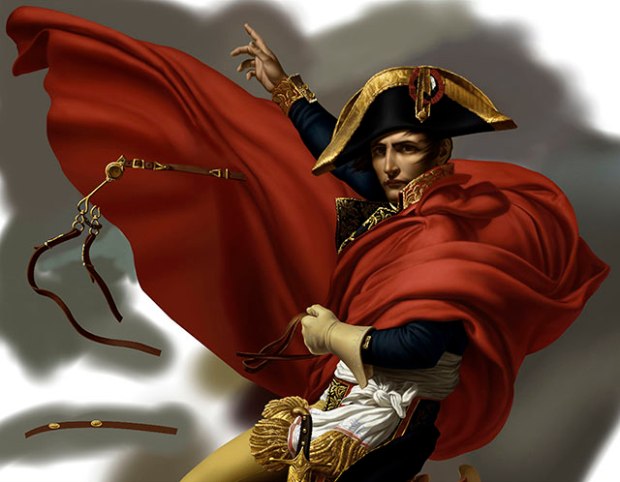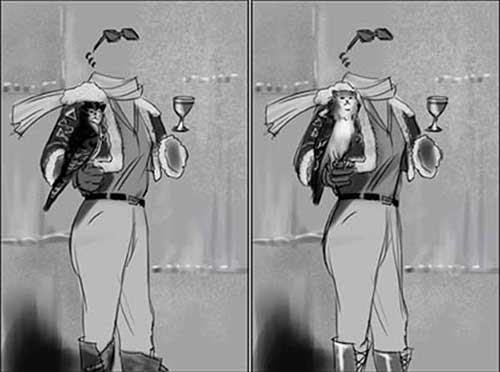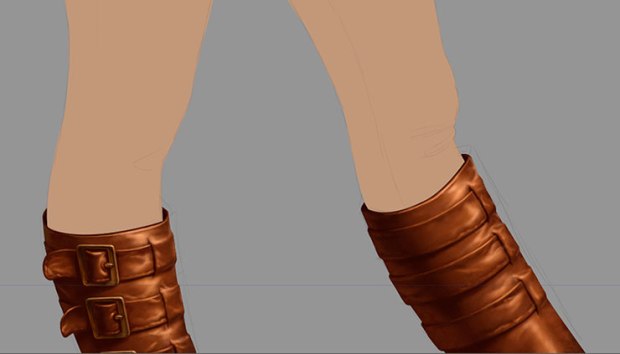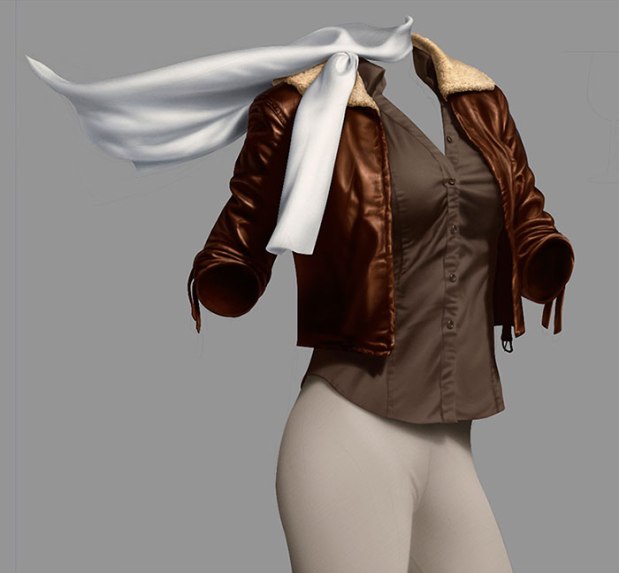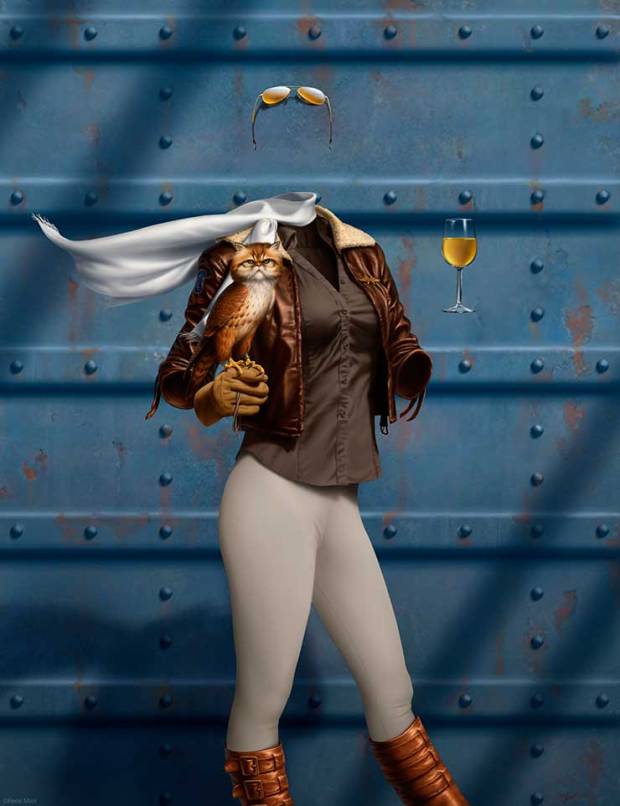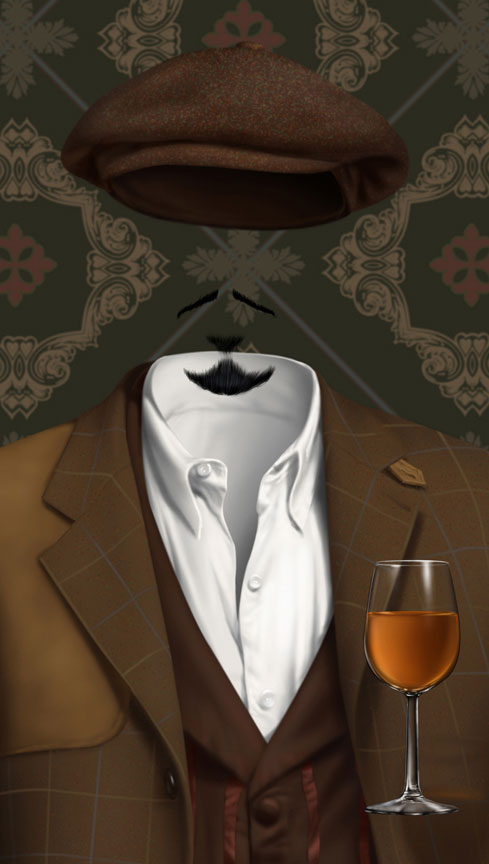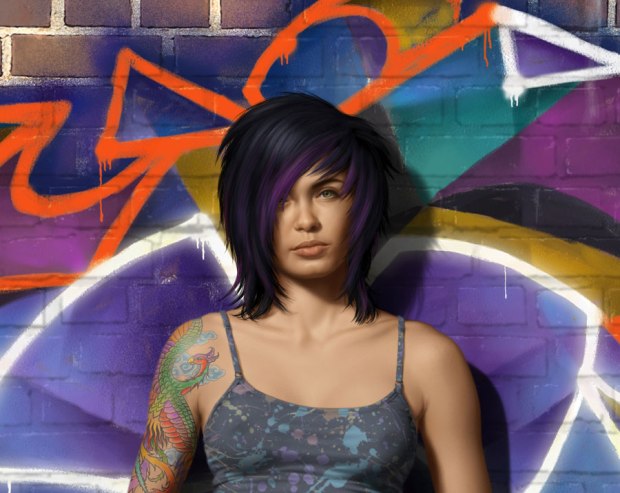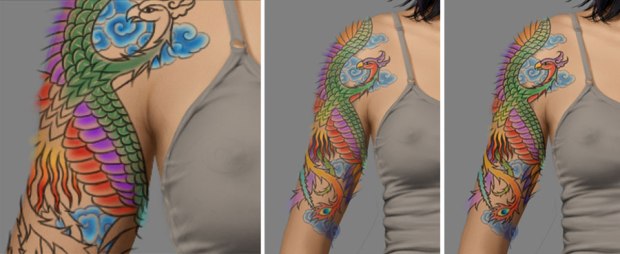Almost completed the Napoléon figure, technically: blocking colours and rendering up to a point: here comes the cow!
Keeping in mind that the client wanted the cow to be painted like the original painting of the horse ; but they wanted the muscularity of the cow to be toned down.
I should also point out that a cow does not move like a horse (duh!): as most people know! The requirement to match the pose of the horse from the original painting by David, was a tricky step in the process: getting a pose that was realistic and believable was solve with a bit of creative licence…
Because this image was going to be used for different formats (bus shelters, posters, etc): there were more “paint” added all around, compare to the original painting by Jacques-Louis David. Keeping in mind that I had to match the extra painting had to look: as if it was just like the original painting.
Because most of us look at paintings like the original by Jacques-Louis David’s Napoléon, identifying with the major theme: in this case: Napoléon Bonaparte on his horse: when you have to “duplicate” the painting like this project dictated: you start discovering all these elements in the background that otherwise would not have grabbed you initial perception of the image.
Next step: completing that background…!
